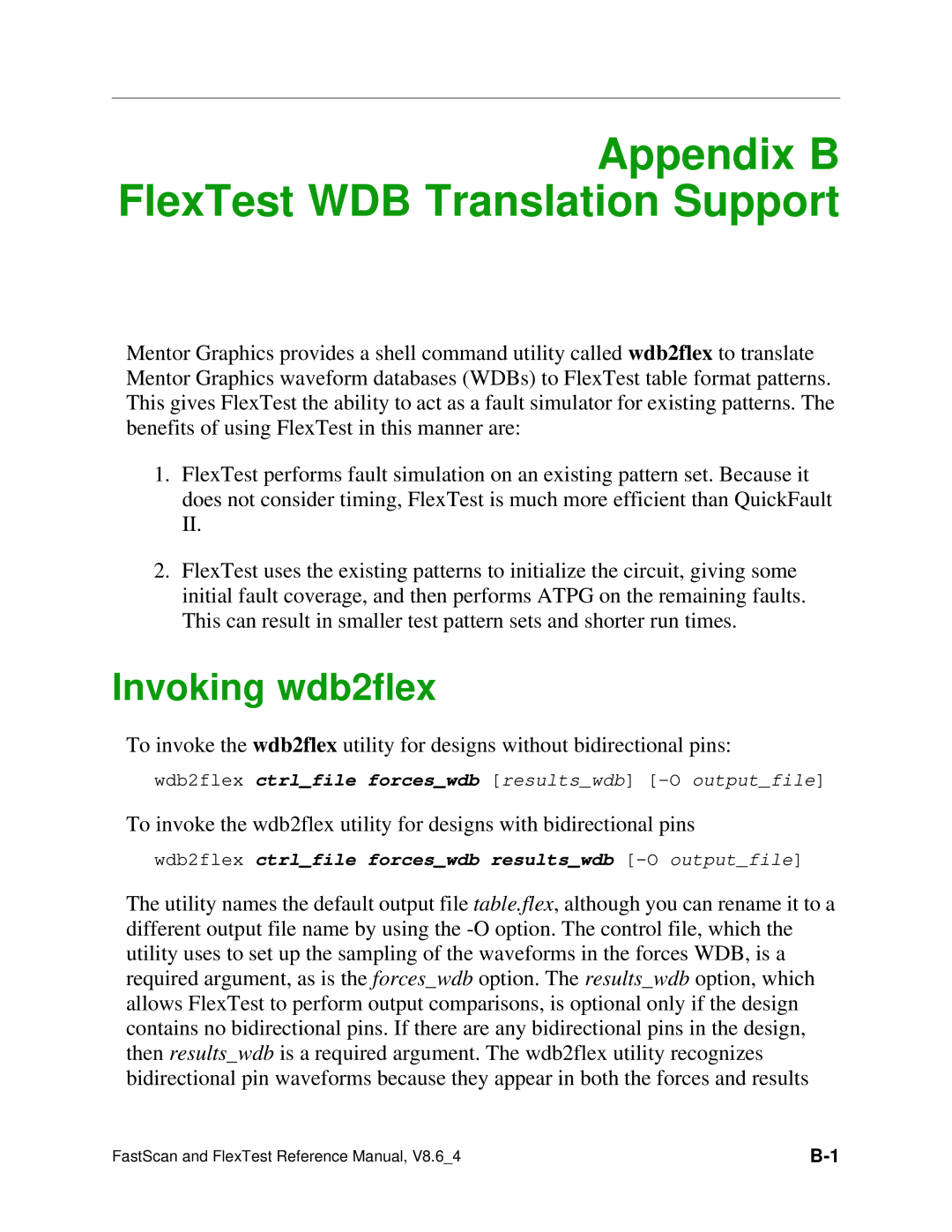Appendix B FlexTest WDB Translation Support
Mentor Graphics provides a shell command utility called wdb2flex to translate Mentor Graphics waveform databases (WDBs) to FlexTest table format patterns. This gives FlexTest the ability to act as a fault simulator for existing patterns. The benefits of using FlexTest in this manner are:
1.FlexTest performs fault simulation on an existing pattern set. Because it does not consider timing, FlexTest is much more efficient than QuickFault II.
2.FlexTest uses the existing patterns to initialize the circuit, giving some initial fault coverage, and then performs ATPG on the remaining faults. This can result in smaller test pattern sets and shorter run times.
Invoking wdb2flex
To invoke the wdb2flex utility for designs without bidirectional pins:
wdb2flex ctrl_file forces_wdb [results_wdb]
To invoke the wdb2flex utility for designs with bidirectional pins
wdb2flex ctrl_file forces_wdb results_wdb
The utility names the default output file table.flex, although you can rename it to a different output file name by using the
FastScan and FlexTest Reference Manual, V8.6_4 |
